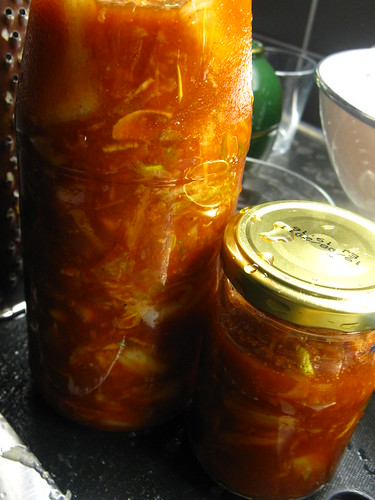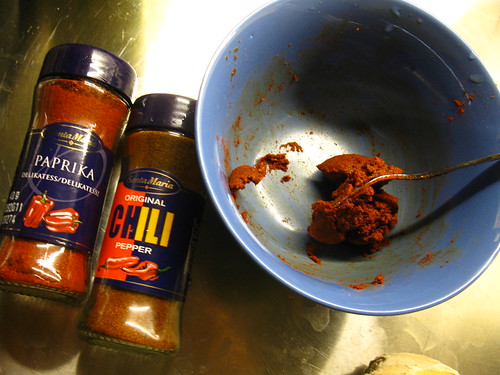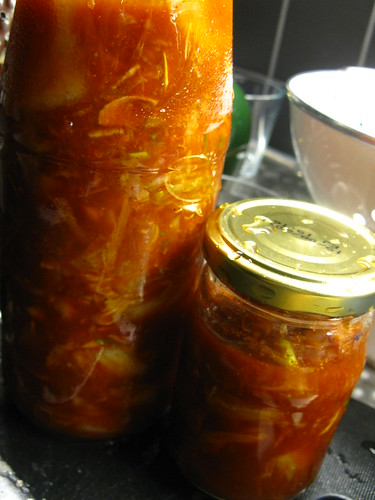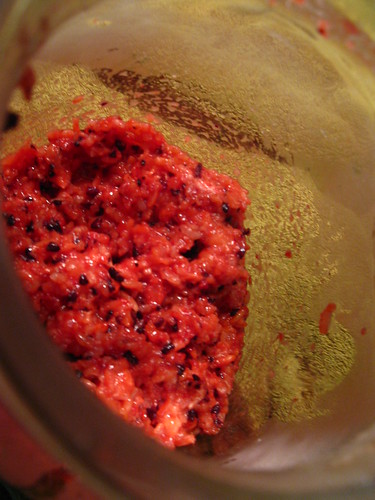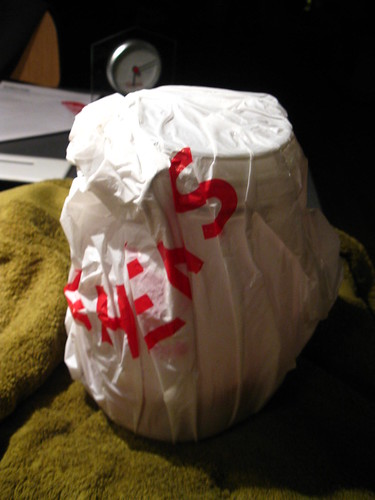It never really crossed my mind to make my own Kim Chi until a friend passed me some she made herself while we were in Lund two years ago. Since then, I have been trying to find a easy recipe to try and I finally found it here, at Dr Ben Kim's site which has detailed steps you can follow to make your own. I did some changes particularly to the Korean pepper powder which after some research I felt can be substitute with a mix of paprika and chili powder you can find in any spice rack in a supermarket. SoooOOoo....I tried it and it was quite successful and you can vary how spicy you want it to be by adjusting the amount of chili powder you want in it. So here's my take on making Kim Chi:
Ingrediants
1 chinese cabbage or napa cabbage or da bai cai, about 400-600g
3 tablespoons of paprika powder
3 tablespoons of chili powder
3 tablespoons of salt
About 50-80ml warm water
1 tablespoon minced garlic
1 tablespoon minced ginger
half a ripe apple, grated & half a ripe chinese pear, the kind with yellow skin grated and both mixed with about 200ml of water.
2-3 spring onions, sliced thinly
2 tablespoon fish sauce
Steps
- Cut up the cabbage into 2cm chunks and put it in a bowl.
- Sprinkle the salt over the cabbage, mix it up and let it rest for about 4 hours. The salt is supposed to draw out the water from the cabbage and also act as a preservative of sort. You should expect them to be limp like this:
- And here's my substitute for the Korean pepper, I mix it up with the warm water to form a paste. It may not look like much, but believe me, it will be enough:
- Add in the paste, garlic, ginger, apple & pear mixture, fish sauce and spring onion. Mix it all up together and this will be your kimchi:
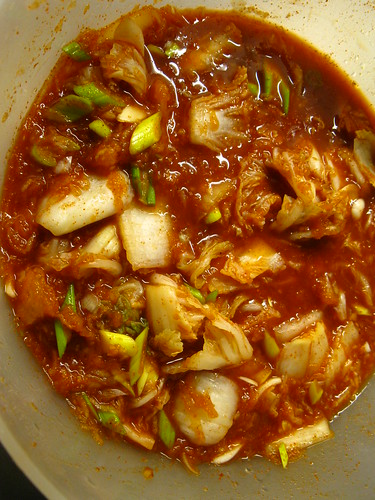
- Bottle it up and let it stand at room temperature for 24 hours and you can keep in the fridge for at least a month. According to Dr Kim's site, the longer you keep it, the more sour it gets as it ferments. I like to eat mine with the Korean pancakes :)
